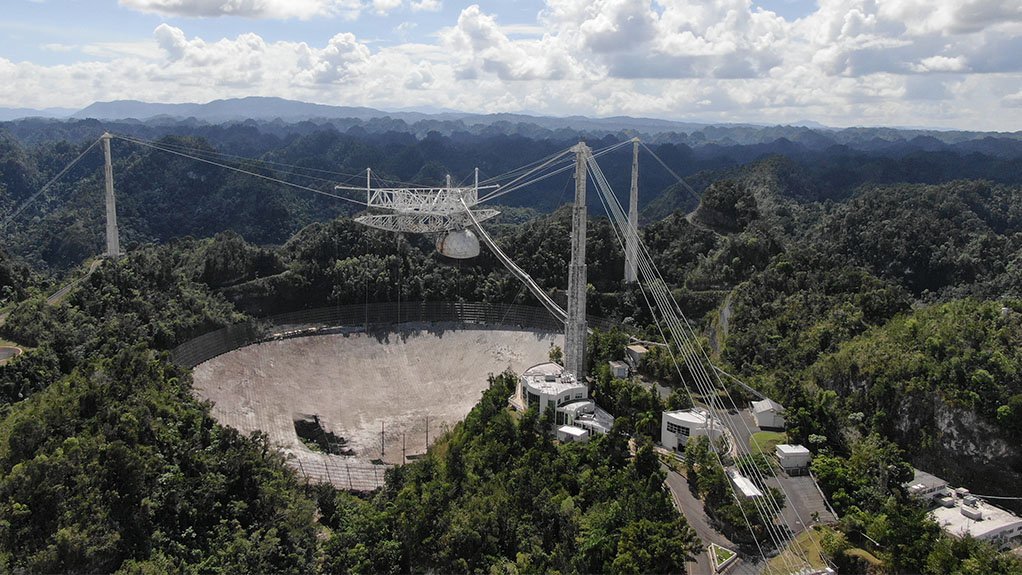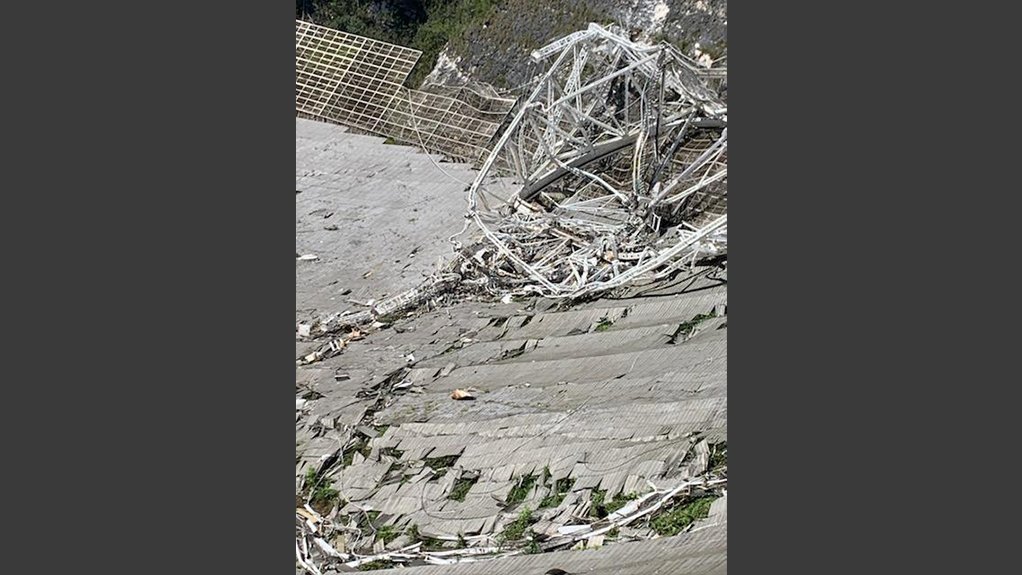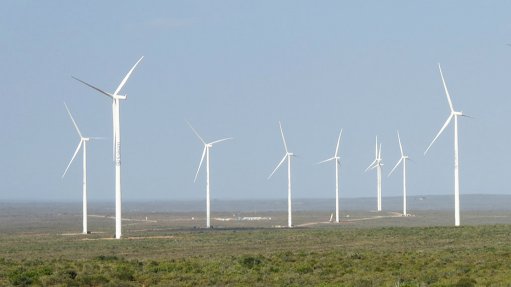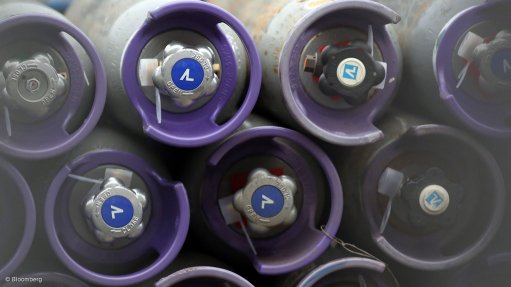Renowned Arecibo radio telescope collapses



The Arecibo radio telescope, photographed after the first main cable break in November but before the fall of the suspended instrument platform. Damage to the dish is clearly visible.
Photo by University of Central Florida
A view of part of the Arecibo dish following the collapse, showing the wrecked instrument platform and severe damage to the dish.
Photo by University of Central Florida
The feared but expected collapse of the famed Arecibo radio telescope, in the US territory of Puerto Rico, happened just before 08:00 Tuesday local time (just before 14:00 South African time). Fortunately, there were no injuries.
Located in a natural hollow, Arecibo’s dish was spherical, not parabolic, and a 900 t instrument platform was suspended some 137 m above it, by cables connected to three towers. The instrument platform gave the telescope a limited ability to steer radio beams, allowing the telescope to cover a 40˚ arc of the sky above it.
Last month, the US National Science Foundation (NSF) announced that it was going to decommission the 305 m diameter radio telescope because it had become structurally unstable. In August, an auxiliary support cable had “detached” from its tower and smashed into the dish below, leaving an about 30 m gash in it. The NSF authorised engineering analyses as the first step in a repair process. These studies were still under way when, early in November, a main cable, connected to the same tower, broke, inflicting more damage on the dish.
On Tuesday, one of the remaining main cables seems to have snapped or detached from its tower, causing the instrument platform to fall. But because it was still connected to the other two towers by the remaining main cables, it did not fall vertically but swung down in an arc and smashed into the upper rim of the dish, in the process also damaging other facilities at the site. The observatory’s Learning Centre, in particular, suffered significant damage. Further, the tops of all three of the cable support towers broke off as the platform fell, and its remaining support cables dropped.
“We are saddened by this situation but thankful that no one was hurt,” said NSF director Sethuraman Panchanathan. “When engineers advised [the] NSF that the structure was unstable and presented a danger to work teams and Arecibo staff, we took their warnings seriously and continued to emphasise the importance of safety for everyone involved. Our focus is now on assessing the damage, finding ways to restore operations at other parts of the observatory, and working to continue supporting the scientific community, and the people of Puerto Rico.”
The other installations at Arecibo include a Light Detection and Ranging (better known as Lidar) facility, a 12-m-diameter radio telescope dish and a visitor centre. The observatory also has a Remote Optical Facility on the small Puerto Rican island of Culebra. All these will remain in operation.
For 53 years, the fixed Arecibo radio astronomy dish was the largest single-aperture telescope in the world. It was only eclipsed in mid-2016 when China’s 500-m-diameter Aperture Spherical Telescope was commissioned. It was arguably the most famous American radio telescope, and certainly one of the most famous in the world, and featured in a number of TV series and films, including GoldenEye and Contact.
Comments
Press Office
Announcements
What's On
Subscribe to improve your user experience...
Option 1 (equivalent of R125 a month):
Receive a weekly copy of Creamer Media's Engineering News & Mining Weekly magazine
(print copy for those in South Africa and e-magazine for those outside of South Africa)
Receive daily email newsletters
Access to full search results
Access archive of magazine back copies
Access to Projects in Progress
Access to ONE Research Report of your choice in PDF format
Option 2 (equivalent of R375 a month):
All benefits from Option 1
PLUS
Access to Creamer Media's Research Channel Africa for ALL Research Reports, in PDF format, on various industrial and mining sectors
including Electricity; Water; Energy Transition; Hydrogen; Roads, Rail and Ports; Coal; Gold; Platinum; Battery Metals; etc.
Already a subscriber?
Forgotten your password?
Receive weekly copy of Creamer Media's Engineering News & Mining Weekly magazine (print copy for those in South Africa and e-magazine for those outside of South Africa)
➕
Recieve daily email newsletters
➕
Access to full search results
➕
Access archive of magazine back copies
➕
Access to Projects in Progress
➕
Access to ONE Research Report of your choice in PDF format
RESEARCH CHANNEL AFRICA
R4500 (equivalent of R375 a month)
SUBSCRIBEAll benefits from Option 1
➕
Access to Creamer Media's Research Channel Africa for ALL Research Reports on various industrial and mining sectors, in PDF format, including on:
Electricity
➕
Water
➕
Energy Transition
➕
Hydrogen
➕
Roads, Rail and Ports
➕
Coal
➕
Gold
➕
Platinum
➕
Battery Metals
➕
etc.
Receive all benefits from Option 1 or Option 2 delivered to numerous people at your company
➕
Multiple User names and Passwords for simultaneous log-ins
➕
Intranet integration access to all in your organisation




















